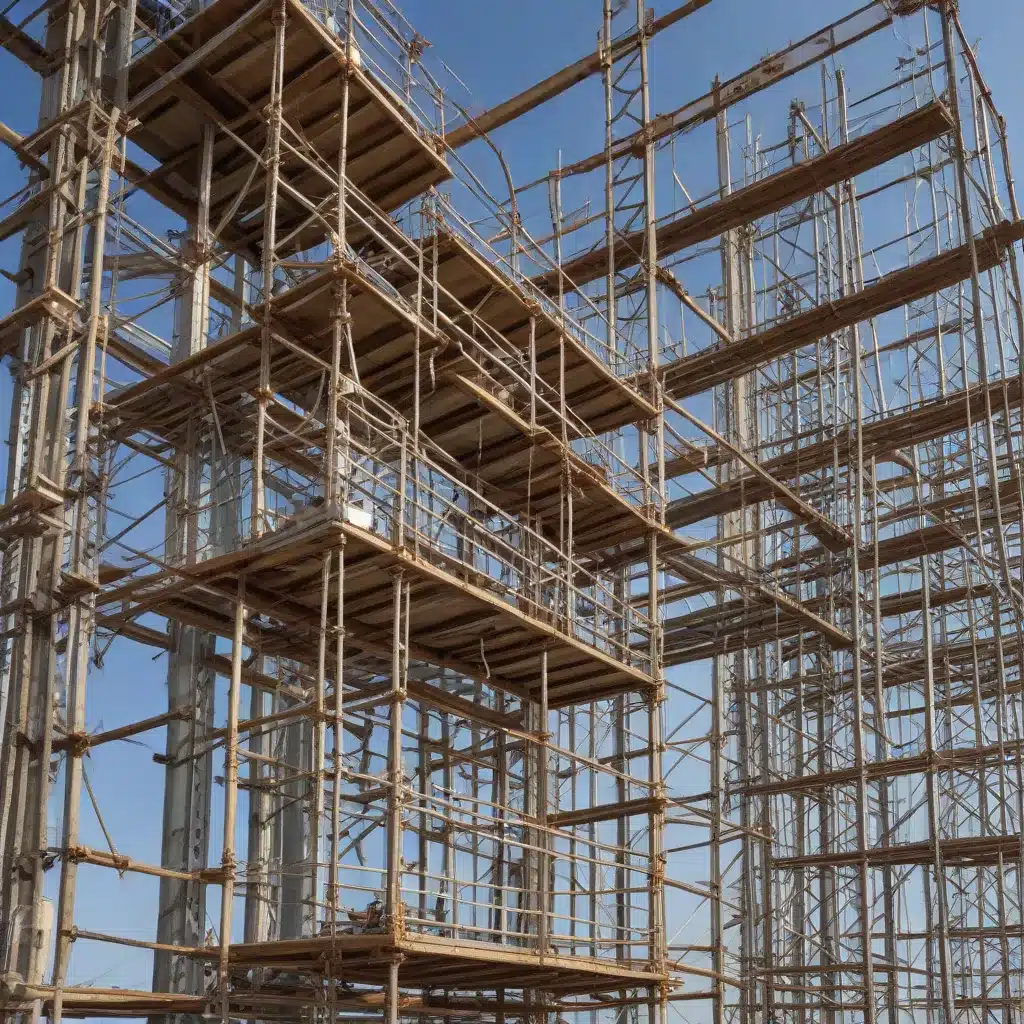
Navigating the UAE’s Scaffolding Landscape: Regulatory Compliance and Cost-Effective Solutions
As the construction industry in the United Arab Emirates (UAE) continues to thrive, the need for reliable and safe scaffolding solutions has become paramount. Adherence to local regulations and the adoption of industry best practices are crucial to ensuring the well-being of construction workers and the successful completion of projects.
Regulatory Landscape in the UAE: A Comprehensive Overview
The UAE has implemented a robust set of regulations and standards to govern the use of scaffolding in construction projects. The Dubai Municipality Building Code and the Abu Dhabi International Building Code are the primary regulatory frameworks that outline the requirements for scaffolding systems, materials, and safety protocols.
Dubai Municipality Building Code
Abu Dhabi International Building Code
These codes address a wide range of considerations, including:
- Material and Design Specifications: Scaffolding materials must meet specific strength, durability, and dimensional requirements to ensure structural integrity and safety.
- Erection and Dismantling Procedures: Detailed guidelines outline the proper steps for setting up and taking down scaffolding structures, with a focus on worker safety and minimizing disruptions to ongoing construction activities.
- Inspection and Maintenance: Regular inspections and maintenance are mandatory to identify and address any potential issues or wear and tear, keeping the scaffolding in optimal condition.
- Safety Measures: Comprehensive safety protocols, including the use of personal protective equipment (PPE), fall protection systems, and access control, must be strictly followed to mitigate risks and prevent accidents.
Compliance with these regulations is not only a legal requirement but also a vital component of maintaining a safe and productive construction environment. Failure to adhere to the established standards can result in fines, project delays, and, more importantly, serious safety hazards.
Innovative Scaffolding Techniques: Enhancing Efficiency and Safety
In the ever-evolving construction landscape, the UAE has embraced innovative scaffolding techniques that enhance efficiency, safety, and cost-effectiveness. These advanced solutions include:
- Modular Scaffolding Systems: Modular scaffolding, which utilizes pre-engineered components, allows for faster setup and dismantling, improved stability, and better adaptability to different site conditions.
- Suspended Scaffolding: Suspended scaffolding systems, such as mast-climbing platforms and swing stages, provide access to hard-to-reach areas, reduce the need for traditional frame scaffolding, and improve workflow efficiency.
- Automated Scaffolding: Automated scaffolding solutions, including robotic and self-climbing systems, minimize the need for manual labor, improve safety, and streamline the installation and dismantling process.
These innovative scaffolding techniques not only enhance productivity but also contribute to a safer work environment by reducing the risk of falls, injuries, and other construction-related hazards.
Cost Considerations and Budget Management
Scaffolding costs can have a significant impact on a construction project’s overall budget. In the UAE, the average cost of scaffolding installation and rental can vary depending on the project’s scope, the complexity of the scaffolding system, and the duration of the rental period.
Based on industry data, the approximate costs for scaffolding services in the UAE are as follows:
| Service | Average Cost (USD) |
|---|---|
| Scaffolding Rental (per square meter per month) | $5 – $15 |
| Scaffolding Erection and Dismantling | $10 – $25 per square meter |
| Specialized Scaffolding (e.g., suspended, modular) | $15 – $35 per square meter |
| Safety Equipment and Personal Protective Gear | $50 – $150 per worker |
It’s important to note that these cost estimates are subject to fluctuations based on market conditions, material prices, and the complexity of the project. Proactive budgeting, careful planning, and effective cost management strategies can help construction firms navigate these variables and optimize their scaffolding expenditures.
Sh. Er Ahmed Scaffolding, a leading provider of scaffolding services in the UAE, offers a range of solutions tailored to meet the unique needs of construction projects. Their expertise in navigating local regulations, implementing innovative scaffolding techniques, and providing cost-effective solutions can be invaluable for construction firms operating in the region.
Ensuring Safety and Compliance: Best Practices for Scaffolding in the UAE
Maintaining a strong safety culture and adhering to industry best practices are essential for scaffolding operations in the UAE. Construction firms should prioritize the following measures to ensure the well-being of their workers and compliance with local regulations:
- Comprehensive Training and Certification: All personnel involved in scaffolding operations, including erectors, dismantlers, and users, should undergo thorough training on safety protocols, equipment handling, and emergency procedures.
- Regular Inspections and Maintenance: Scheduled inspections by qualified professionals and proactive maintenance of scaffolding structures are crucial to identify and address any potential issues before they escalate.
- Use of Appropriate Personal Protective Equipment (PPE): Mandatory use of PPE, such as hard hats, safety harnesses, and steel-toed boots, can significantly reduce the risk of workplace injuries.
- Effective Communication and Coordination: Clear communication and coordination among project stakeholders, including construction managers, site supervisors, and scaffolding providers, can help ensure the seamless integration of scaffolding solutions into the overall construction workflow.
- Continuous Improvement and Monitoring: Construction firms should continuously monitor safety performance, collect feedback, and implement necessary adjustments to their scaffolding practices to maintain the highest standards of safety and compliance.
By embracing these best practices, construction companies in the UAE can create a safer work environment, enhance productivity, and minimize the risk of regulatory non-compliance and associated penalties.
Navigating the Future of Scaffolding in the UAE
As the UAE’s construction industry continues to evolve, the demand for innovative and cost-effective scaffolding solutions will only continue to grow. Construction firms that stay ahead of the curve by adopting the latest technologies, adhering to safety regulations, and optimizing their scaffolding strategies will be well-positioned to succeed in this dynamic market.
Through the strategic deployment of advanced scaffolding techniques, meticulous adherence to local regulations, and a steadfast commitment to worker safety, construction companies in the UAE can unlock new levels of efficiency, productivity, and profitability. By embracing this holistic approach, the UAE construction industry can set a new standard for scaffolding excellence, further strengthening its position as a global leader in the built environment.
